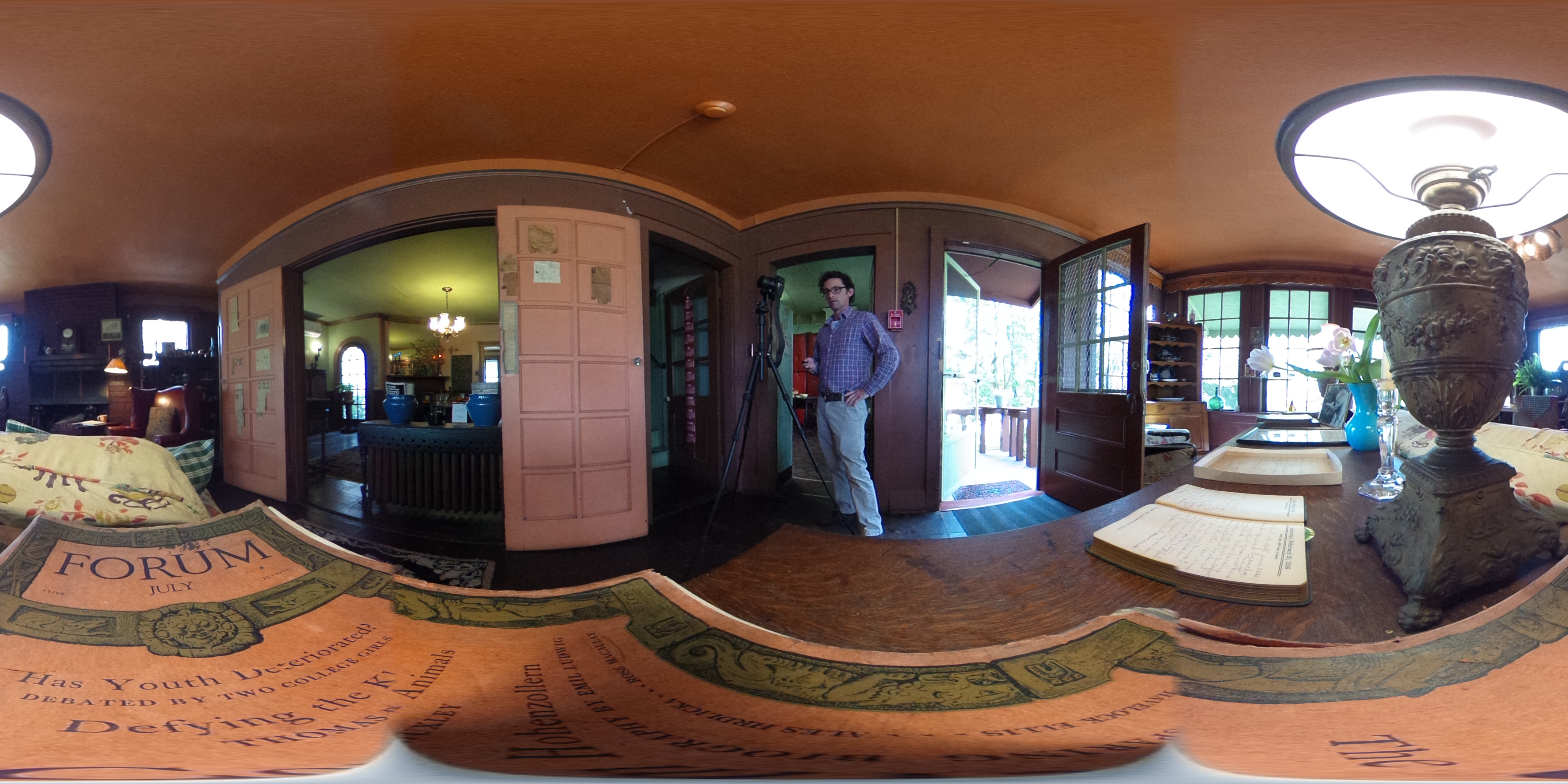Touring Virginia has gotten much easier. You can now visit Ash Lawn-Highland, Montpelier and many other historical Virginia sites without leaving your home, thanks to an ongoing collaboration between Google and Encyclopedia Virginia.
Since 2008, Encyclopedia Virginia, a project of the Virginia Foundation for the Humanities, has provided an authoritative resource on the history and culture of the commonwealth. The online encyclopedia has published more than 900 entries, more than 500 primary documents and over 3,500 media assets (images, audio files and moving images).
Matthew Gibson, the project’s editor, said Encyclopedia Virginia seeks to bring contemporary and reliable scholarship about Virginia’s history to the public while also engaging the audience through innovative technologies. Entries are written and vetted by scholars and fact-checked to ensure they are accurate and up-to-date.
Many entries are complemented by primary documents. For example, the entry on Sally Hemings, Thomas Jefferson’s reputed slave mistress, contains links to letters, newspapers, memoirs, wills and even a DNA report.
A top priority of the project has always been to stay on the cutting edge of technology. For the project’s programmer, Peter Hedlund, it’s all about how content can be presented in dynamic and innovative ways. “Here at Encyclopedia Virginia,” he said, “we want to keep pushing the boundaries of what we are doing and how our users are interacting with and using our content.”
In 2012, Hedlund traveled to Google’s main campus in Mountain View, Calif., to learn more about online mapping – a visit that inspired collaboration. Then, Google was just beginning to use its “Street View” feature to photograph indoor locations so that people could take virtual tours of historic sites.
“The idea of the conference was to bring people from nonprofits together and learn how they could use Google mapping tools to promote their mission,” Hedlund said. “Google did a session on ‘Street View’ technology, and I was certain Encyclopedia Virginia could somehow make use of it.”
A few months later, a Google employee traveled to the Virginia Foundation for the Humanities and trained Gibson and Hedlund on how to use the camera and the software necessary to stitch together the digital images online. Thus armed, Gibson and Hedlund traveled across Virginia creating virtual tours of everything from Jefferson’s Poplar Forest, near Lynchburg, to James Madison’s Montpelier. The Virginia General Assembly allocated $85,000 to help fund the endeavor, which will include creating virtual tours of the Virginia Capitol and Governor’s mansion.
The Street Views are published as Street View panoramic tours on Google Maps and subsequently embedded on Encyclopedia Virginia.
Currently, a viewer can find virtual tours of 16 historical sites attached to relevant entries. Viewers click on the tour and “walk” through the location site as if they were there.
This summer, Gibson and Hedlund plan to create tours of the Virginia State Capitol, the Governor’s Mansion and the gun deck of the Hermione, a replica of the French warship used by General Lafayette during the American Revolution. Also on the list are sites such as Cape Henry Lighthouse and several historically significant sites in Southwest Virginia.
Encyclopedia Virginia’s virtual tours have been extremely popular among Virginia’s teachers. With school districts’ budgets being slashed, there’s often little money left for field trips – making online field trips a more attractive option.
“Teachers love our site because it provides a free, authoritative source on Virginia history,” Gibson said. “Along with the amazing entries, we have everything from the Cactus Hill archaeological site to Oliver Hill, the civil rights attorney.
“We now have this tool that literally allows students to leave the classroom and inhabit spaces where so much of the history they are reading about actually happened.”
In 2014, the Virginia Council of the Social Studies presented its Friend of Education Award to Encyclopedia Virginia “because it provides teachers and students in Virginia and throughout the world with high-quality and accessible primary sources, innovative pedagogy and history scholarship.”
“We always need to be innovative to engage students and to make the project relevant,” Gibson said. “History doesn’t have to be a textbook, and Google Street View plays a huge part in making history more alive and engaging.
“This is clearly both an educational and tourism tool, but it’s also a preservation tool. Not all of these structures will be around forever, but we hope that these tours will be a way to preserve their memory.”
The project’s team was invited to present at the 2014 Geo for Good User Summit at Google headquarters as one of the few humanities nonprofits using the Street View technology. On Aug. 6 and 7, Encyclopedia Virginia will host its own statewide Geo for Good Summit with participation from Google Earth Outreach at the Virginia Foundation for the Humanities conference center. The focus of the workshop, “Mapping the Humanities,” will be digital map-making for members of Virginia’s nonprofit humanities and arts sectors.
“Now that we know how to create this type of content, we want to teach other humanities organizations in Virginia to be able to do it themselves,” Gibson said. “Spreading this knowledge to other organizations helps them promote their mission and provides new ways that the public can engage with the humanities.”
Media Contact
Article Information
June 8, 2015
/content/touring-virginia-virtually-google-partners-encyclopedia-virginia

